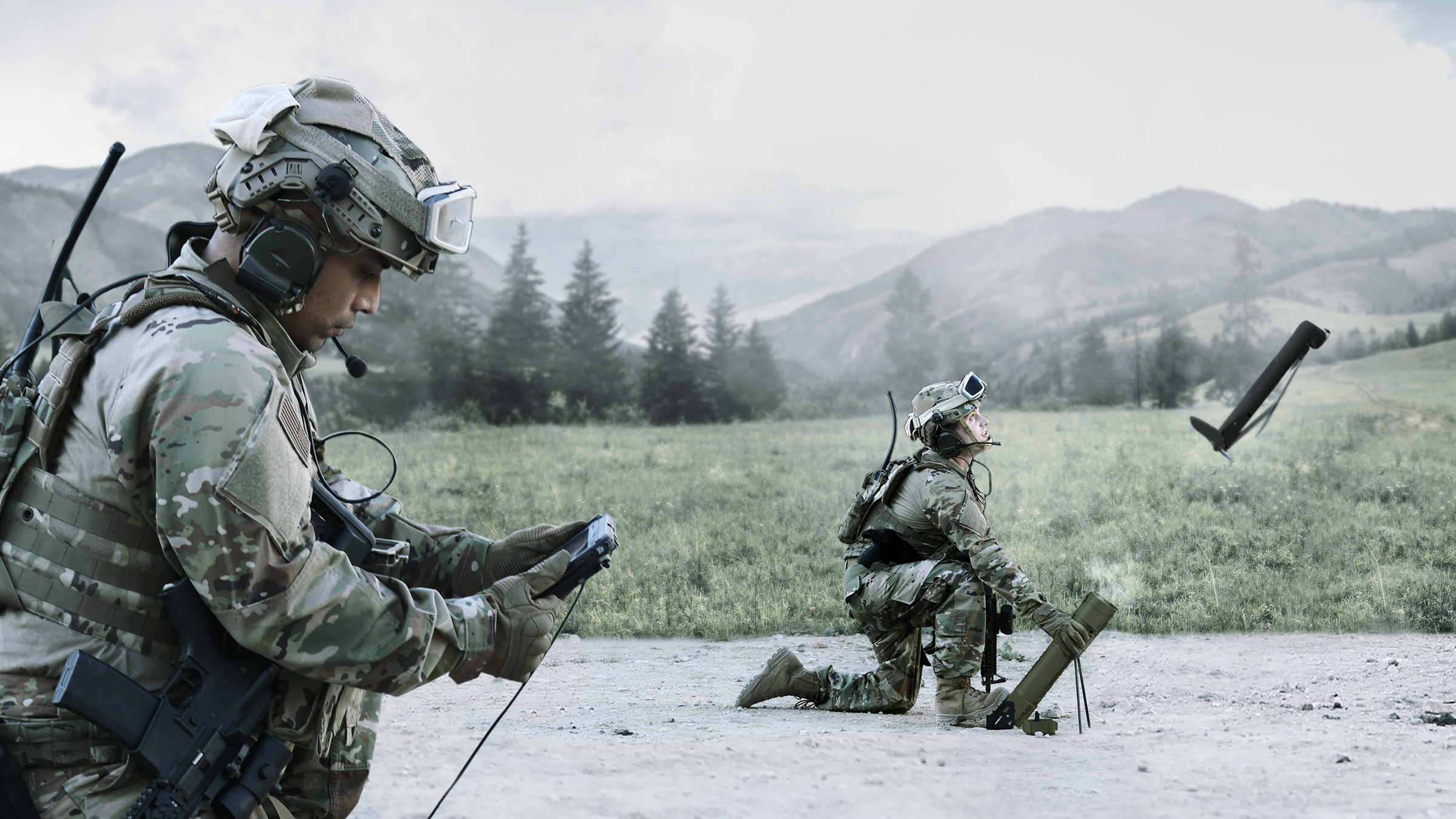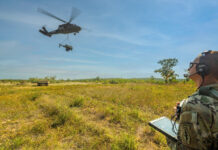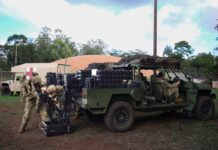Reducing the time between detection, identification, and engagement by the appropriate weapon platform is crucial in order to maximise the chances of successful target destruction on the battlefield. This requires a near real-time sensor-to-shooter (STS) loop, enabled by the latest command and control (C2) technologies networked with effectors.
Lessons learned on the battlefields of Ukraine show that the tactics and conduct of modern warfare have changed forever, as new technologies have entered the fray and soldiers have grown proficient in understanding both how to use them and what it means to be on the wrong end of them. Loitering munitions and drones have transformed modern warfare, in large part by minimising tactical STS timeframes and maximising target neutralisation chances. They monitor the battlefield, connected through intelligent command and control (C2) systems, and then, target identified, strike with precision.
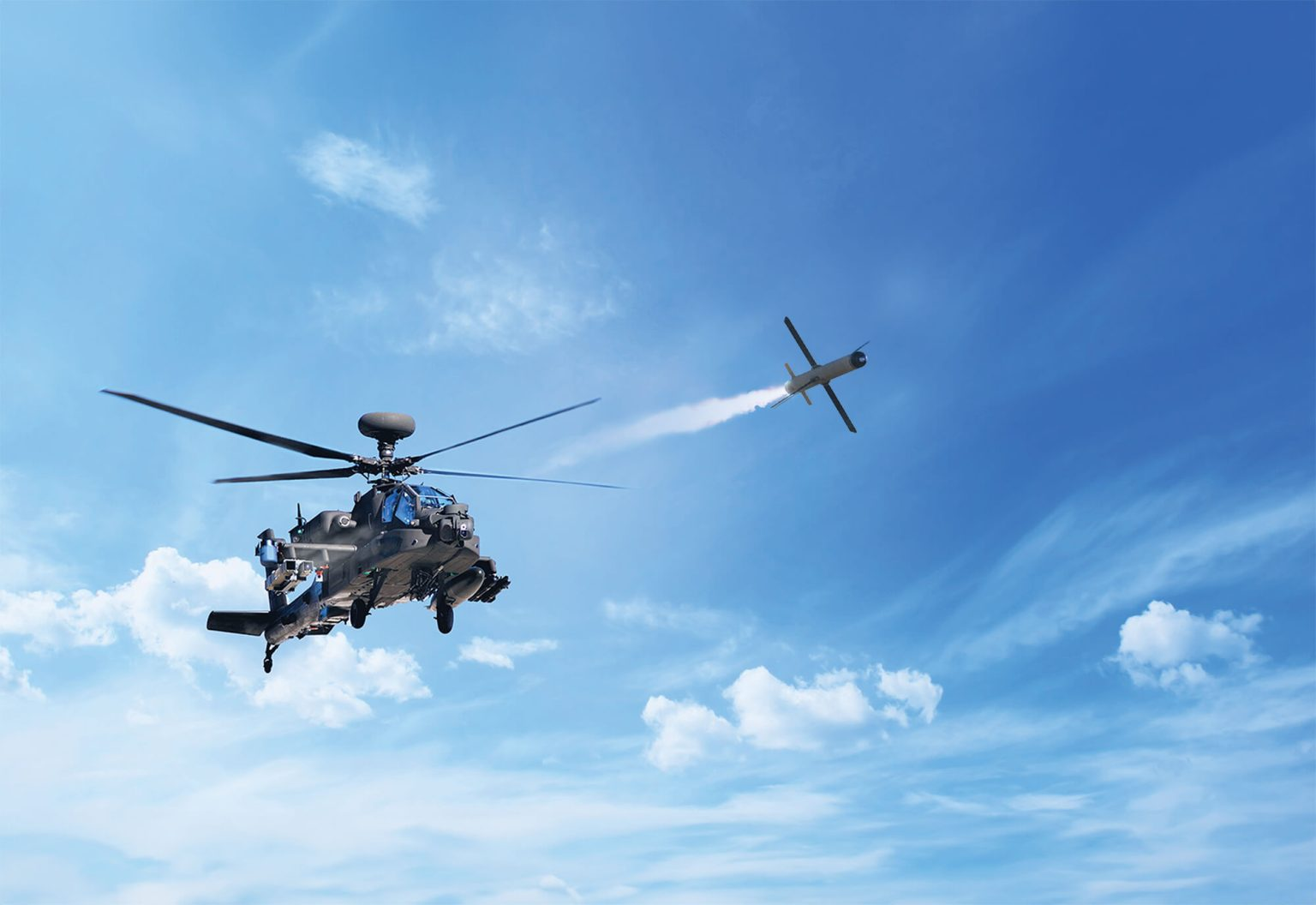
Weaving magic
Before looking at specific LM programmes, a look at Israeli company Rafael Advanced Defense System’s Fire Weaver STS system helps set the scene. This system can be thought of as a software layer which sits between networked sensors, C2 Systems, and effectors, and links them together; connecting and disseminating essential information to all integrated battlefield elements, in real time. Fire Weaver collects, filters, and disseminates data from multiple sources and sensors on the battlefield, using a common visual language to display that information for each individual soldier and all systems that have been integrated with Fire Weaver. It can handle large numbers of simultaneous STS transactions and provides comprehensive situational awareness (SA) of the operational area. This can include augmented reality (AR) displays in the common visual language, on all relevant optical equipment highlighting necessary battlefield information to users, for instance, friendly/hostile force locations, targets, points of interest, and others.
Fire Weaver also uses automated processes to select the optimal shooter for each target identified, in turn speeding up target engagement and decreasing the cognitive burden for commanders. The system’s open architecture ensures integration is possible with various battle management systems (BMSs), radios, sensors and weapon systems, thereby supporting interoperability between joint or allied forces.
The US Army has its sights set on improving its STS capabilities and evaluated Rafael’s Fire Weaver for use with battalion-sized tactical formations back in early 2021. US subsidiary, Rafael Systems Global Sustainment, demonstrated the system’s ability to integrate with other tactical equipment, including disparate BMSs, and collate data from other friendly sensors to provide an overall operational picture of an area for all active units to share. This ability to integrate with other electronics was the basis for Rafael signing an MoU the same year with France’s Safran, to integrate Fire Weaver with the French company’s Moskito TI target locater, in advance of demonstrations for an unnamed customer.
The medium-range Moskito TI monocular target locator itself, meets NATO C4I requirements; it is designed for use by infantry and SOF, with direct view day, low-light TV, and thermal channels, as well as a laser rangefinder, capable of displaying target locations and distance measurements in seconds. Following on from the MoU in June 2022, the agreement’s full sales and marketing collaboration between the two companies was officially signed, with Rafael benefitting from Safran’s established customer base for the widely-used target locator, including amongst several NATO nations. Indeed, it is understood that Fire Weaver integration into all Safran’s target locators is ongoing, as well as, from reports, with other target locators used by allied infantry and SOF globally, including the US Army.
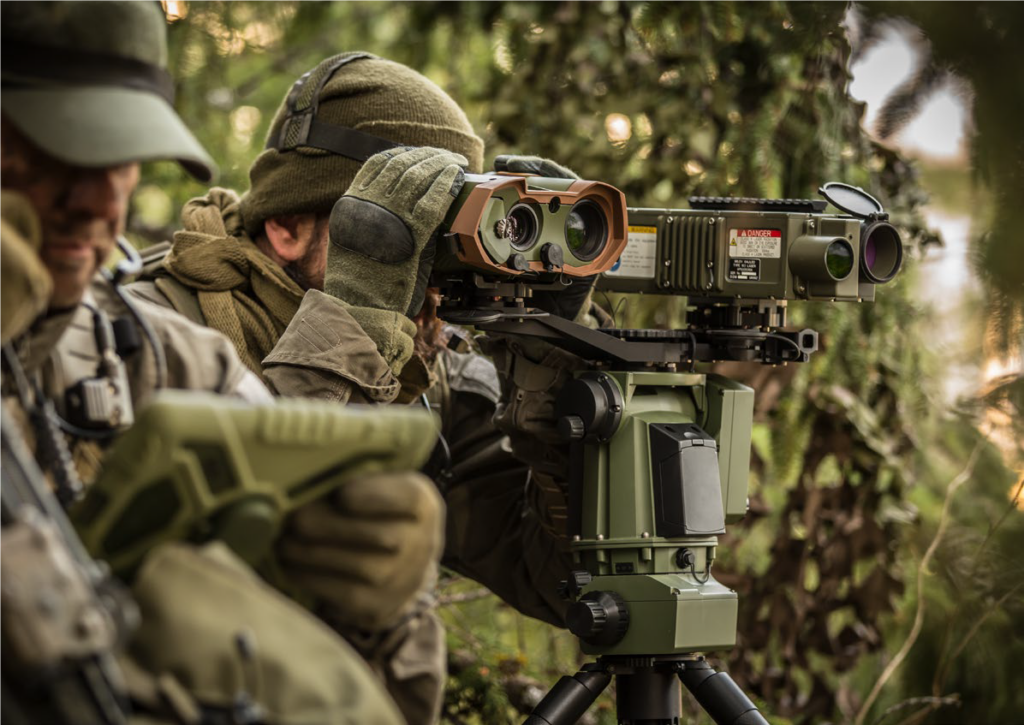
It is worth noting that Fire Weaver has been put to effective STS use by Rafael itself, to provide a comprehensive STS dimension for its Spike NLOS (non-line-of-sight) anti-tank guided missile (ATGM). Rafael now also offers an all-in-one STS package marketed as the ‘Spike NMT’ (NLOS Mission Taskforce). This consists of unmanned aerial vehicle (UAV) platforms to provide information, surveillance and reconnaissance (ISR), along with a ground launch platform armed with multiple Spike NLOS missiles, with everything networked via BNET radios, and integrated with Fire Weaver.
The loitering munition: a self-contained sensor and shooter package
The latest LMs incorporate a range of sensors and guidance capabilities, as well as explosive warheads, so they can perform all-in-one location, tracking, and attack functions; unlike traditional UAVs and drones used for intelligence, surveillance, target acquisition, and reconnaissance (ISTAR) applications, the raison-d’etre of LMs is for them to function as both sensor and shooter, able to loiter over the battlefield until performing a precision strike on their target as their final act. However, if operational conditions change, LM operators can typically abort a strike, and continue loitering until either a strike is needed or they run out of power.
One LM maker, Israeli company, UVision, has been producing LMs for many years with its Hero range of weapons increasingly widely used, including with NATO members. Hero weapon systems are designed to give front-line forces, a long-range, independent-fire capability, combined with advanced intel-gathering functions. Furthermore, all Hero systems can operate in GPS-denied environments, with the smaller models suited to forward-deployed, light tactical units and SOF. These are the Hero-30, 90 and 120, with each man-portable or suited to installation on light vehicles; they can be operational and in the air within 2-3 minutes, controlled by a single operator. The larger Hero-400EC, 900 and 1250 are for heavier land or naval vessel installation and launch.
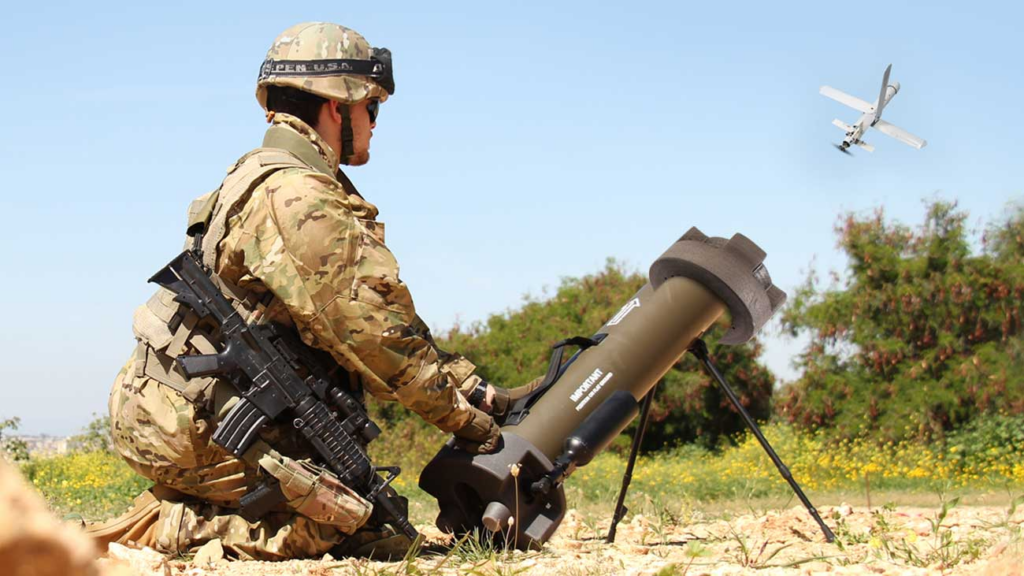
At the end of 2022, it was also announced that Argentina was to become the first Latin American Hero user, adopting both Hero-30 and 120 weapons for evaluation by Argentine SOF, marines, airmobile and field artillery units, in line with a programme by the Argentine Armed Forces Joint Chiefs of Staff to modernise its munitions over a number of years. Not long after, in July 2023, Rheinmetall and UVision announced they had been supplying Hero LMs to Hungary under a ‘three-digit million-euro’ contract, with deliveries beginning 2024 and completed in 2025.
Back in the US, in early 2024, the company partnered with Science Applications International Corp (SAIC) for the US company to produce Hero-120 LMs at its South-Carolina facility, with the Hero-120 having previously been ordered in its thousands by the DOD for US Forces. This included the USMC as part of its Organic Precision Fire Mounted (OPF-M) programme. Then in June 2024, UVision announced that with its US representative, Mistral Inc., it had won a USD 73.5 million contract with the US DOD for Hero-120SF LMs to be supplied to US Special Operations Command (SOCOM), along with conversion protocols for OPF-M systems to be to converted to medium-range precision strike systems, with the contract slated for completion by 2029. Production of the LMs is taking place at UVision USA’s facilities in Virginia and the new SAIC plant, while Mistral Inc. is overseeing the industrial and commercial aspects of the deal.
The US ‘Replicator’ initiative
It is worth mentioning the DOD’s Replicator initiative. The first step, known as ‘Replicator 1’ was announced back in August 2023, and aims to field thousands of autonomous systems across multiple domains by late 2025. The overall goal of this initiative is for the US to be able to call upon large numbers of attritable autonomous systems to offset China’s numerical superiority in conventional military capabilities.
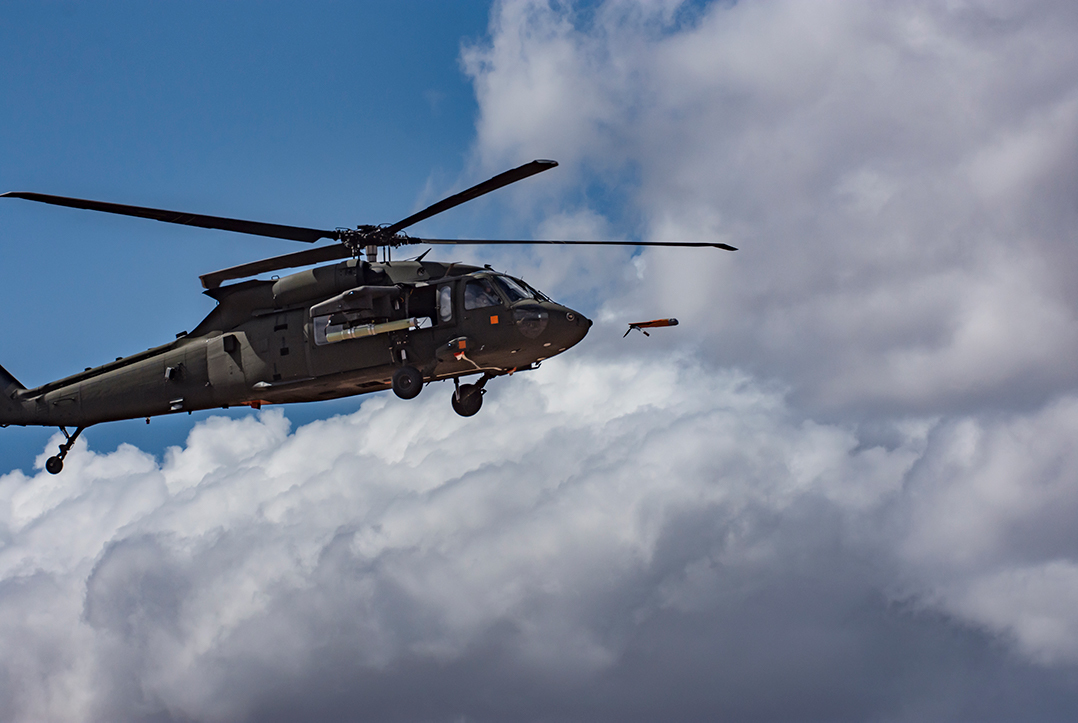
While much of the Replicator initiative is classified, key elements cover contracts not only for UAVs and LMs, but also for unmanned surface vehicles (USVs), and unmanned underwater vehicles (UUVs). While all NATO member countries will follow their own procurement decision processes for greater UAV and LM inventories, this US initiative will likely hold sway in terms of collective procurement opportunities as well as issues of interoperability within the Alliance. Indeed, NATO has been watching the accelerated fielding of UAV systems by the US during 2024, including over 1,000 Switchblade 600 LMs, and it seems to have had an impact.
It is worth noting first that AeroVironment won a five-year indefinite delivery, indefinite quantity contract for its LM in August 2024, from the US Army Contracting Command (ACC)-Aberdeen Proving Ground, with a potential ceiling value of USD 990 million. The Switchblades are intended to meet the US Army’s directed requirement for lethal unmanned systems, with deliveries underway, having been slated to begin within months of the announcement. The contract underlines the growing importance of loitering munitions as part of the US Army’s LASSO (low-altitude stalking and strike ordnance) programme, in support of infantry operations. As for NATO, the US Army’s ACC signed a further contract with AeroVironment in September 2024, valued at almost USD 55 million. This was again for the supply of Switchblade, but this time for NATO members, Lithuania, Romania, and Sweden, using US Foreign Military Sales funding. Deliveries are due to be completed during 2026, and the systems supplied will incorporate modifications based on battlefield feedback from Ukraine.
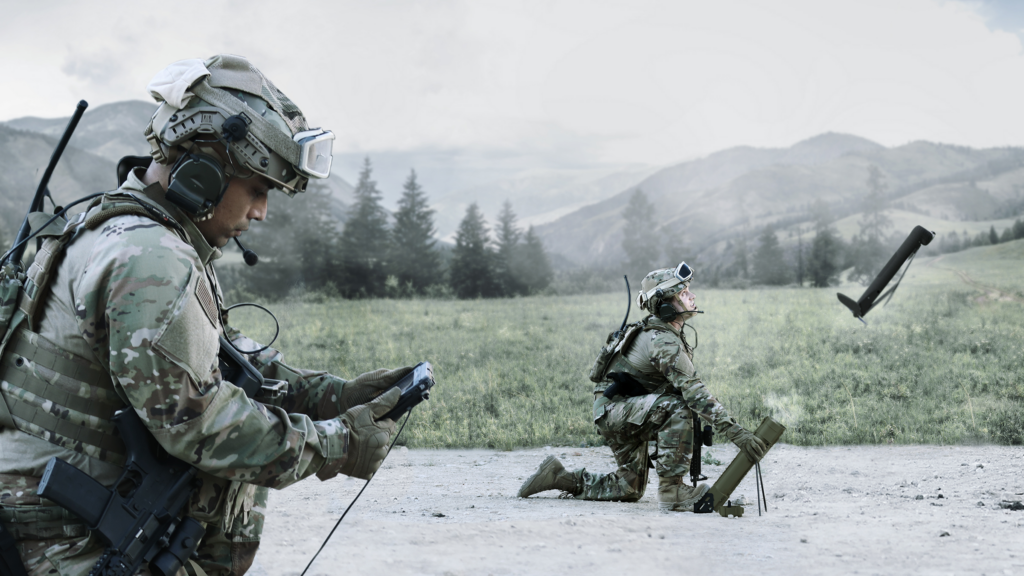
Interest remains strong
Space precludes detailed mention of many relevant LMs, though brief mentions in closing, of recent contracts include Israel Aircraft Industries’ (IAI) two early-2024 deals valued at over USD 145 million, for the delivery of long-range LMs to two unnamed customers for its Harpy NG and Harop systems. This highlights what an IAI spokesperson said at the time was the growing tactical and strategic importance of LMs on the battlefield in ensuring operational success. Elbit Systems’ SkyStriker, too, is another operationally proven LM, ordered by a European customer in September 2023 valued at USD 95 million, involving delivery of several hundred units by September 2025. Finally, while the USMC’s OPF-L programme has already been mentioned, final word goes to Teledyne FLIR, which signed a USD 12 million contract with the Corps in April 2024, for 127 advanced small vertical take-off and landing (VTOL) LMs, for earlier evaluation under the programme. It seems evident that interest in maintaining the tightest possible STS loops is increasing, with LMs looking to be at the forefront of such efforts with many armed forces.
Tim Guest




